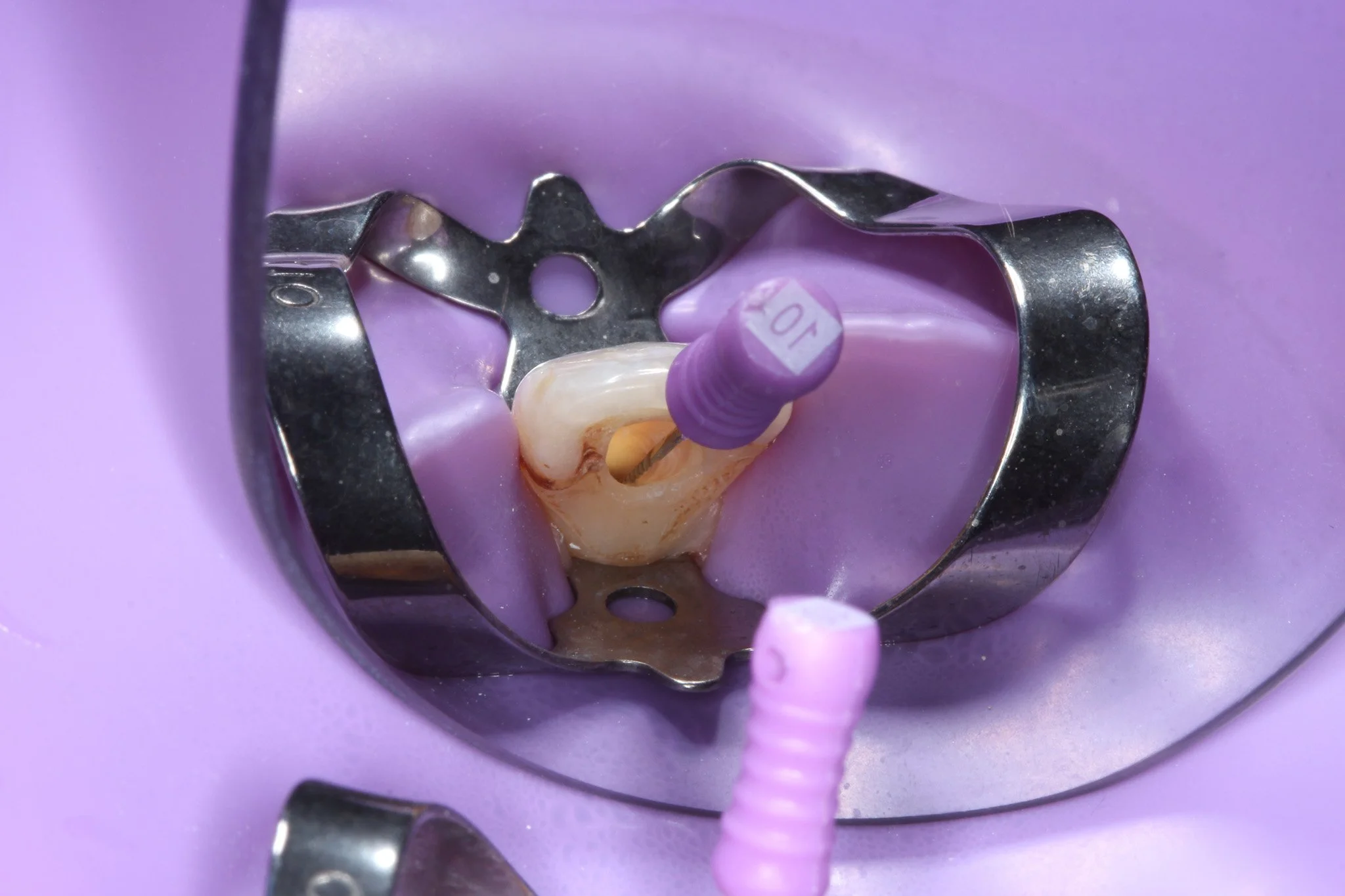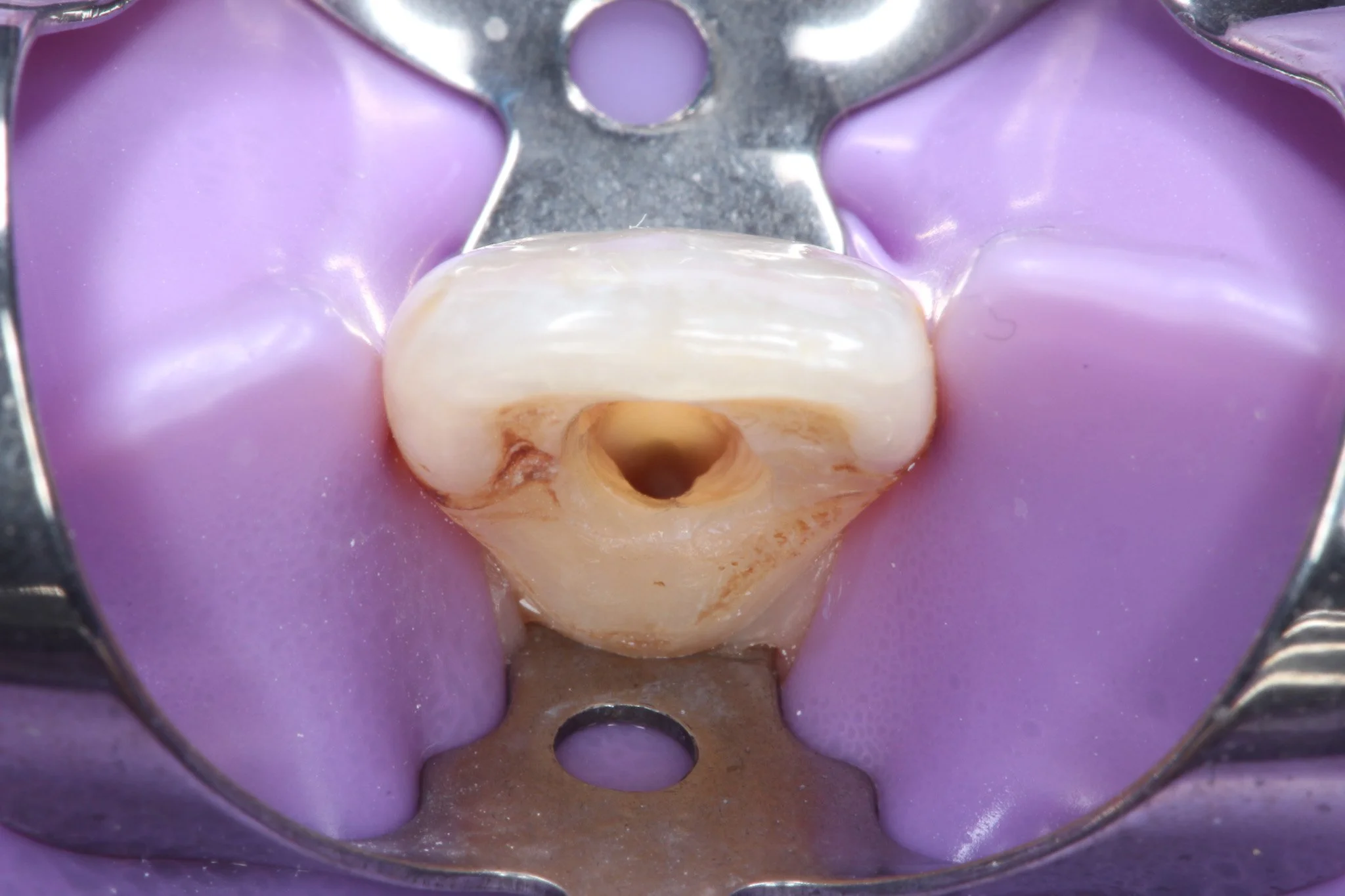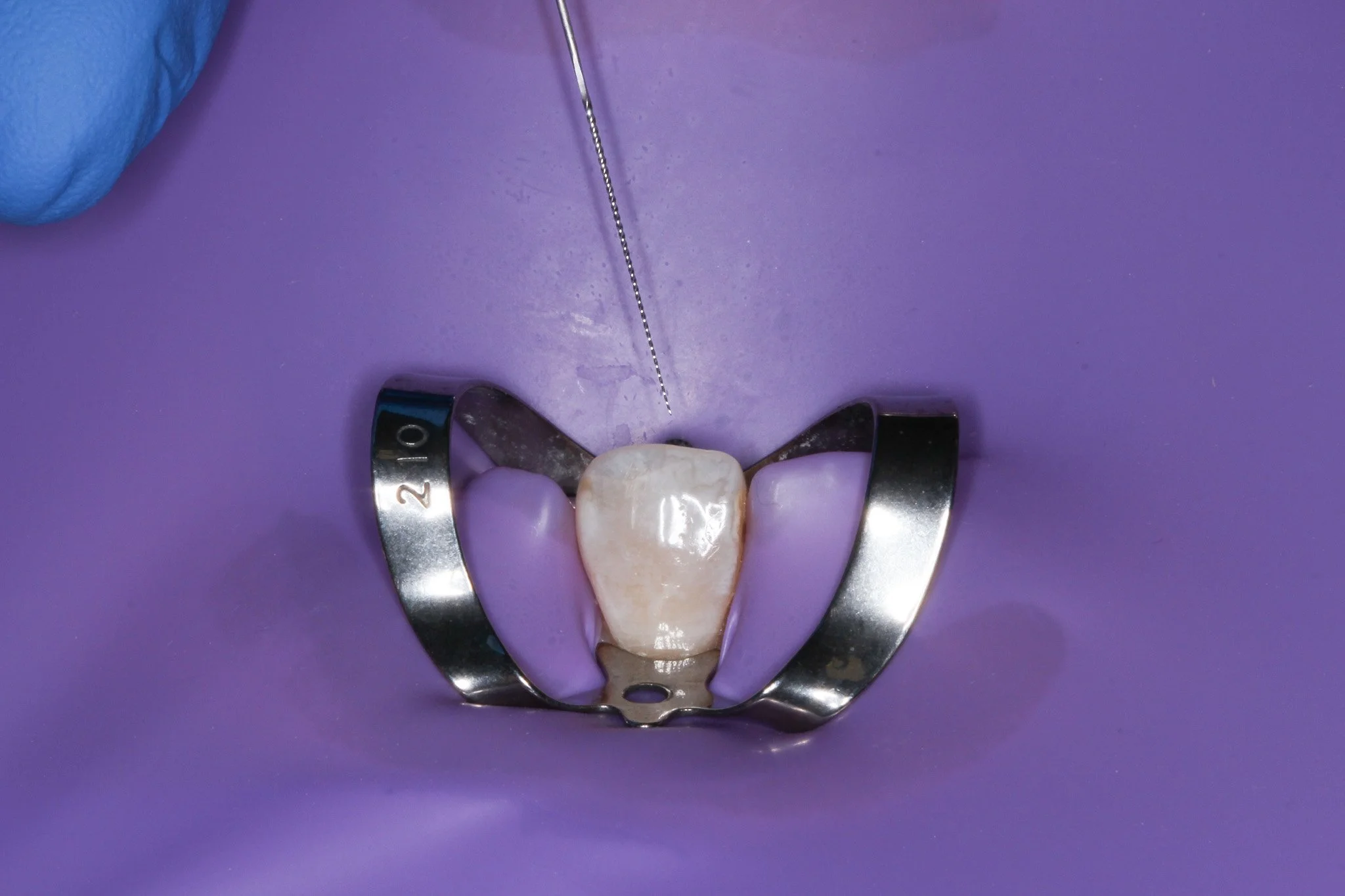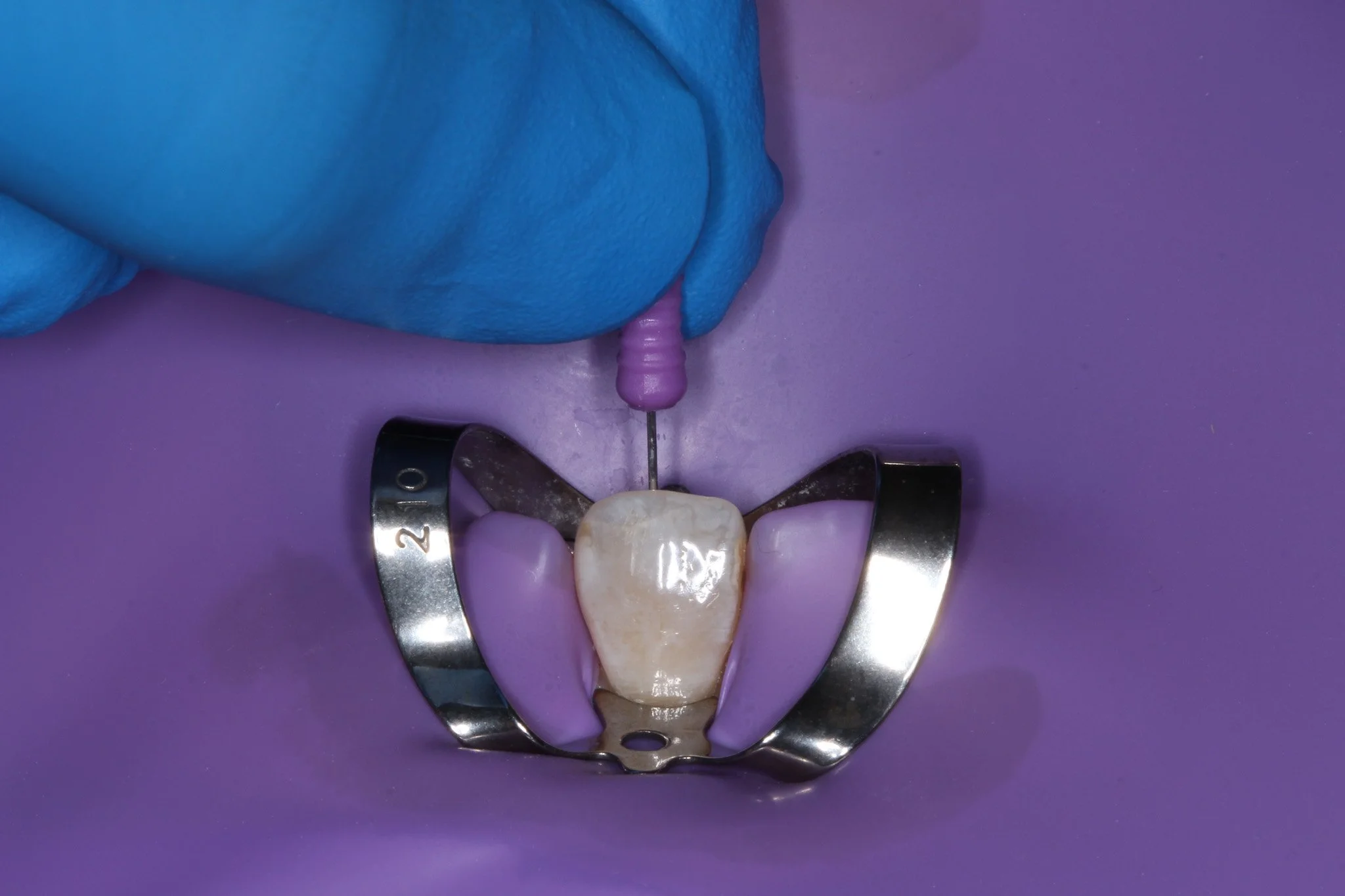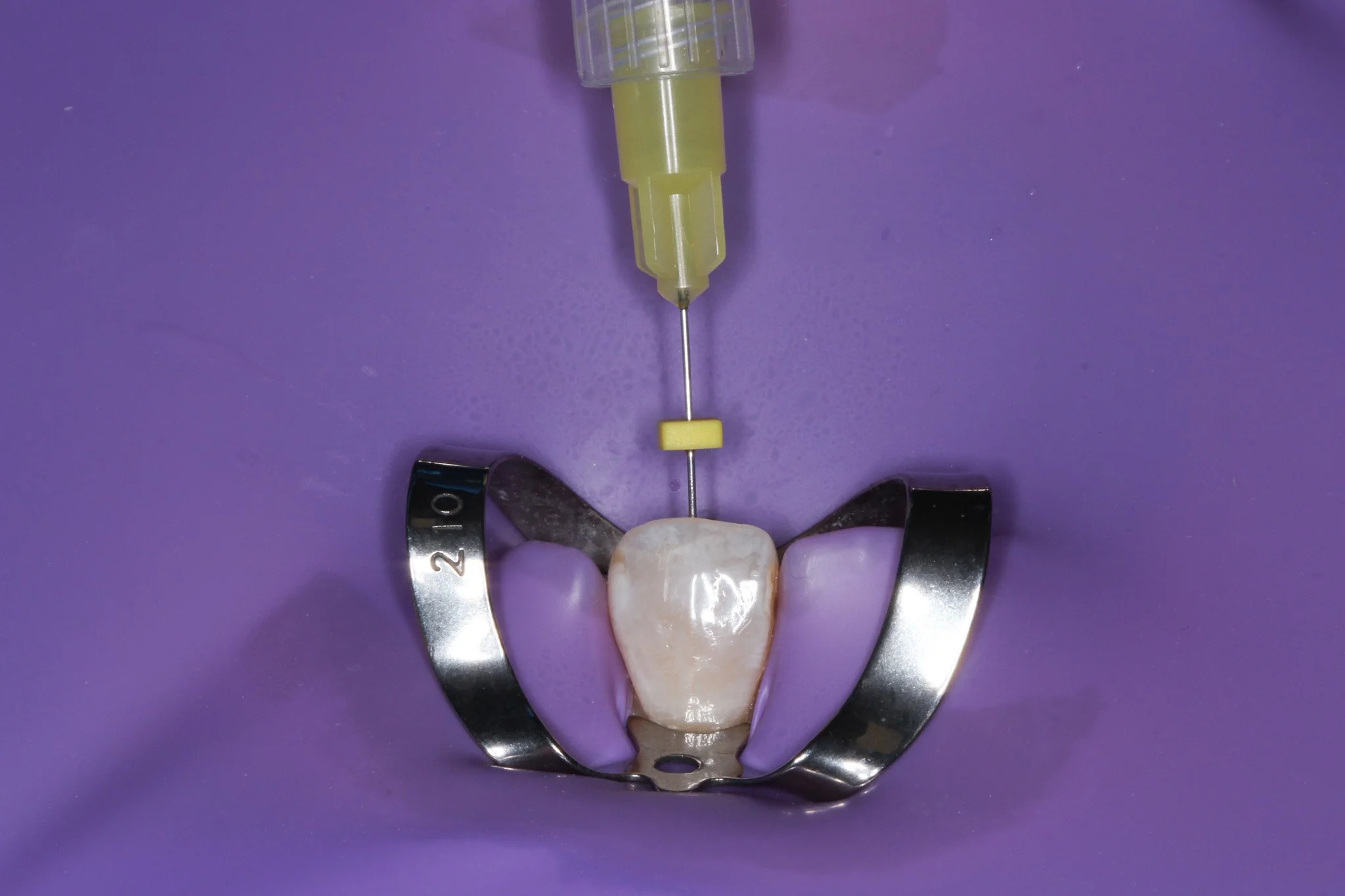Got toothache or been told you need a pulp extirpation?
This page explains exactly what a pulp extirpation is, why it's done, what to expect during the procedure, and why it’s only the first step in saving your tooth. Whether you’re in pain or just want to understand your treatment better, this guide breaks it all down clearly.
Dental pulp = The central part of the tooth that contains blood vessels and nerve tissue (often referred to simply as ‘the nerve’ of the tooth)
Extirpation = The complete removal or eradication of something
What is a Pulp Extirpation?
Pulp extirpation is a dental procedure where the inflamed or infected nerve tissue (pulp) inside a tooth is removed. It is often the first stage of a root canal treatment, performed when a tooth is causing pain due to deep decay, trauma, or infection.
The procedure involves accessing the inside of the tooth, removing the nerve, disinfecting the canal, and usually placing a medicated dressing to settle the tooth before a full root canal is completed at a later appointment.
An incisor tooth being cleaned with a file
Why Would You Need Pulp Extirpation?
It is often an emergency pain-relief procedure when the pulp is irreversibly inflamed or infected, but there's no time to complete a full root canal in one visit.
You might need a pulp extirpation if you’re experiencing:
Persistent toothache
Pain on biting or chewing
Sensitivity to hot or cold that lingers for minutes or hours after the stimulus
Swelling of the gum or face
An abscess (pus-filled swelling) near the tooth
A history of trauma to the tooth
The goal of the treatment is to relieve pressure that is building up inside the tooth to give you some relief from the pain you are feeling.
The Pulp Extirpation Procedure, Step-by-Step
Here’s what happens during a pulp extirpation appointment. The process usually takes between 30-45 minutes, depending on the tooth, how infected it is and the skill of the dentist.
Assessment and Diagnosis
Your dentist will:
Examine your symptoms
Carry out clinical tests (e.g. cold test, percussion)
Take an X-ray to assess the tooth and root condition
Confirm that you do indeed need a pulp extirpation
At this point, your dentist should explain the situation and provide you with all your options and costs. They should explain the condition of the tooth, how structurally sound the tooth is, and what future treatment will be needed to save the tooth.
If the tooth is beyond repair, your dentist may suggest an extraction (removing the tooth) instead.
Local Anaesthesia
To make sure you’re comfortable throughout, a local anaesthetic is used to numb the area completely. You shouldn’t feel pain during the procedure, just some pressure or movement. This will be done via some small injections around the tooth, and if it’s a lower molar, you may require a dental block, which is an injection in your cheek.
Accessing the Nerve of the Tooth
Your dentist will drill a small opening in the top of the tooth (back teeth) or the back of the tooth (front teeth) to reach the pulp chamber inside. This exposes the infected nerve tissue.
A small hole in the back on an incsor tooth to gain access to the nerve
Draining the Nerve/pulp
Using very fine instruments, the dentist will carefully remove the soft tissue (pulp) from the chamber and root canals. This includes removing bacteria and dead or inflamed nerve tissue that’s causing the pain.
In front teeth, this may involve just one canal
In molars, several canals may need to be cleaned out
This is the part that brings the most pain relief.
Once the pulp is removed, the canals are flushed with an antibacterial solution (like sodium hypochlorite or chlorhexidine) to help eliminate any remaining bacteria. This reduces inflammation and promotes healing.
Placing a Medicated Dressing in the Tooth
A temporary medication is placed inside the canals — often calcium hydroxide — to continue killing bacteria and soothe the tooth from the inside. This helps settle any residual infection and inflammation.
Temporary Filling
Finally, the tooth is sealed with a temporary filling to protect it until you return for your full root canal treatment. This keeps out food, bacteria, and debris and allows you to use the tooth gently in the meantime. Your dentist may also cut back the tooth slightly to prevent you from biting on it too hard and cracking the tooth.
Aftercare: What to Expect
Pulp extirpation provides much-needed relief from dental pain, but it’s only part of the treatment. Here's what to expect after the procedure and how to care for the tooth in the meantime:
Mild discomfort or tenderness for a few days is common
Take painkillers if needed (your dentist will advise)
Avoid chewing crunchy and hard foods on that side until the tooth is fully treated
A follow-up root canal appointment is essential to properly seal and restore the tooth
If you do not complete the root canal filling, the infection can return and casue more pain and issues.
FAQs About Pulp Extirpations
Is a pulp extirpation painful?
No, it is done under local anaesthetic. The aim is to relieve pain, not cause it. However, if your tooth is severely infected, then sometimes it can be hard to get the tooth numb, to begin with. This is known as a ‘hot pulp’ and your dentist will advise on how to manage that situation.
Can the tooth be saved with just this procedure?
No. The tooth must be properly cleaned, shaped, and sealed through a full root canal, or it may become reinfected again. However, a pulp extirpation gives you some time to assess your options.
How long can I leave it before completing the root canal?
It depends on your situation and what your dentist advises, but generally within 2–4 weeks. Leaving it too long increases the risk of reinfection and complications.
What if I don't treat the tooth at all?
The infection may spread to the jaw or bloodstream, causing swelling, fever, or more serious health issues. Eventually, the tooth will be lost.
Still have questions?
If you’ve been told you need a pulp extirpation, don’t panic. It’s a safe and effective way to stop dental pain quickly and buy you time to complete full treatment. But it’s not the end of the journey. Make sure you book your next appointment and finish the root canal process.
If you’re unsure about your diagnosis or options, Nova Smiles is here to help. We offer online consultations with expert UK dentists, so you can ask questions, get second opinions, or even send us a photo of your dental concern.
